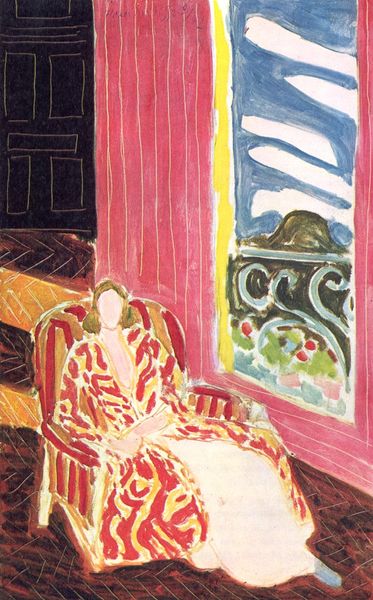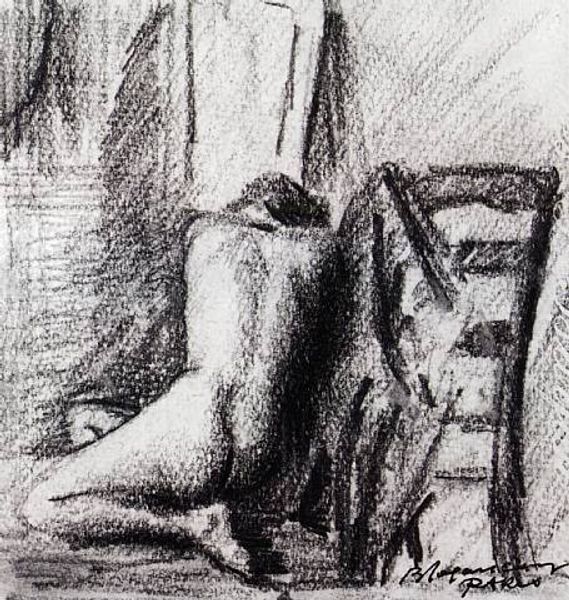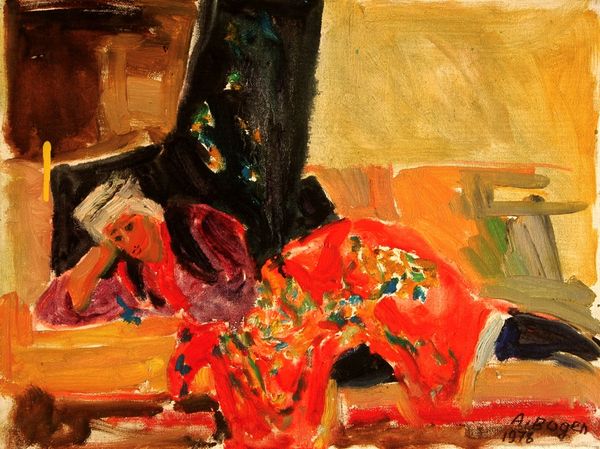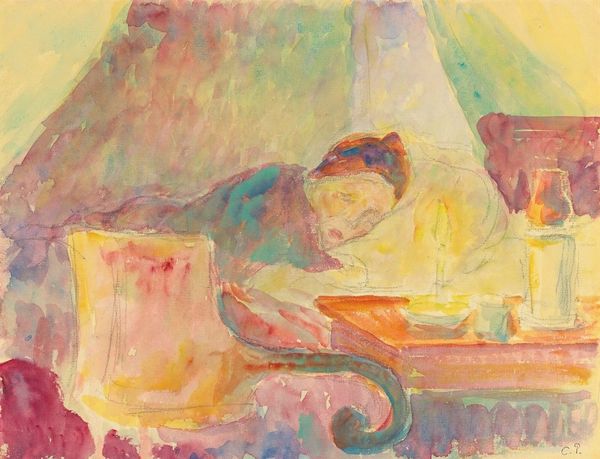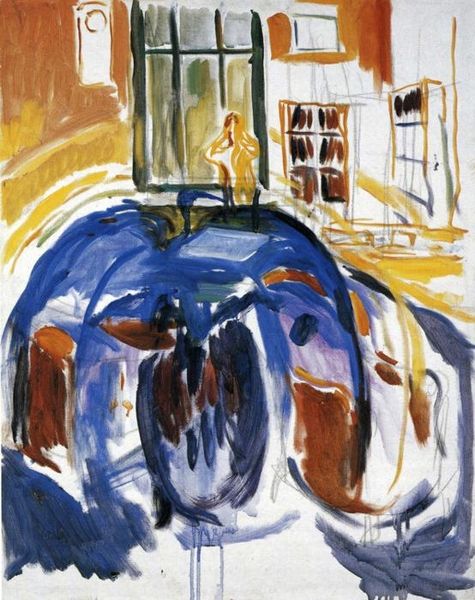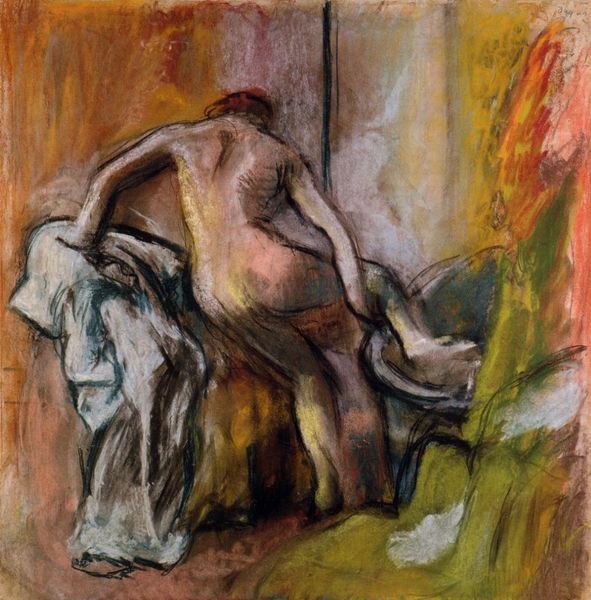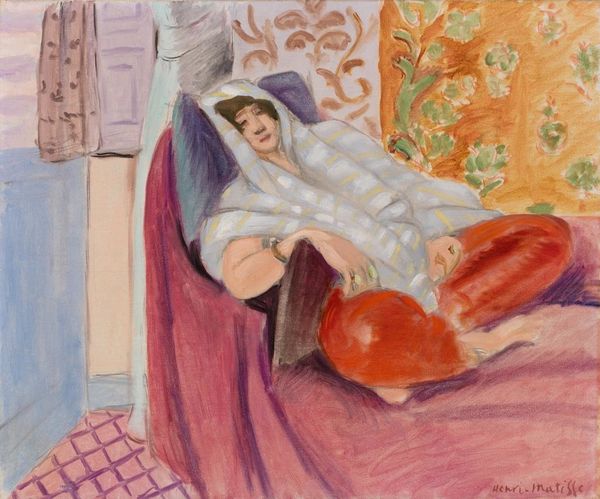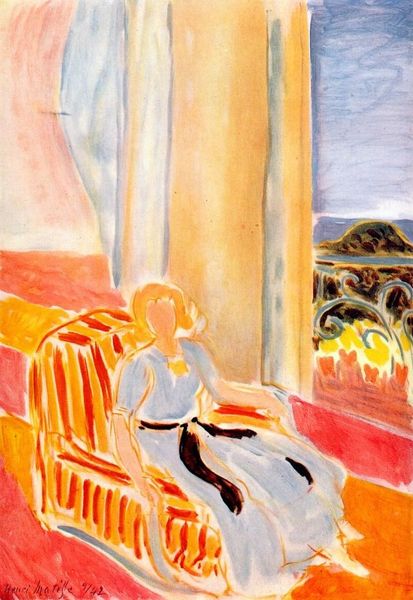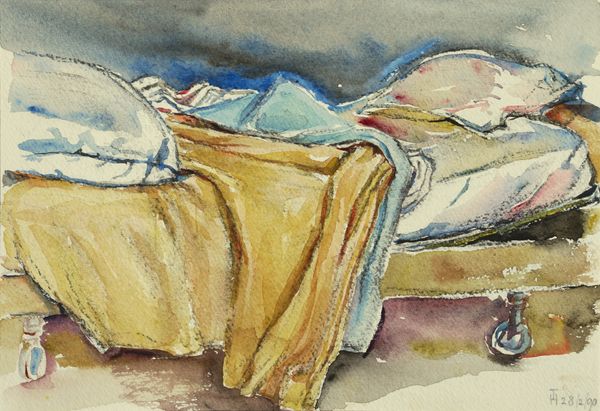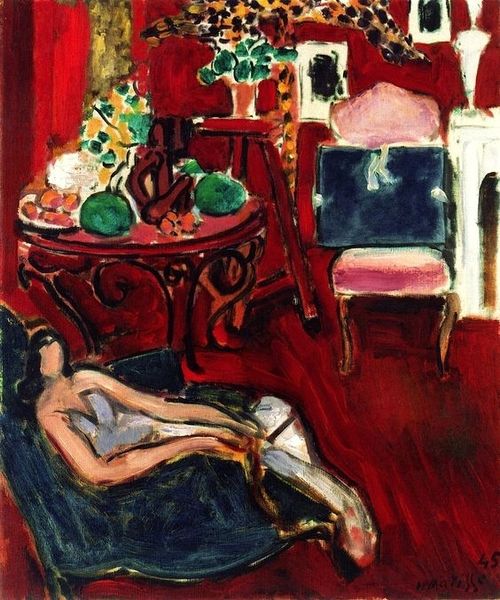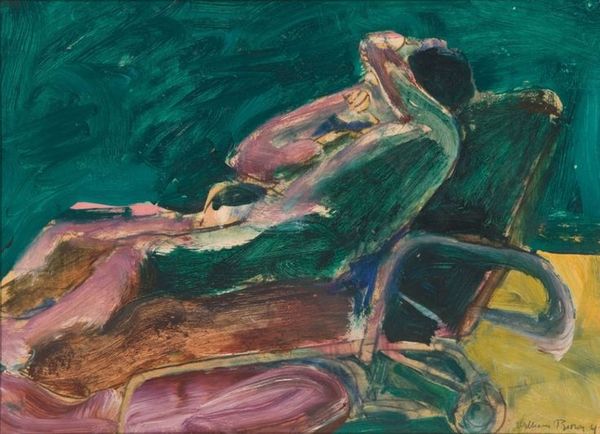
painting, oil-paint
#
portrait
#
self-portrait
#
painting
#
oil-paint
#
landscape
#
intimism
#
expressionism
#
modernism
#
expressionist
Dimensions: 80 x 64 cm
Copyright: Public domain
Curator: Painted in 1930, Edvard Munch’s “Self-Portrait During the Eye Disease I” presents us with a haunting depiction of the artist during a period of illness. It’s a work rendered in oil on canvas, now residing here at the Munch Museum. Editor: My gut reaction? Isolation. That shadowy form at the bottom of the painting… It feels like a heavy cloak, almost suffocating him. There’s a real sense of vulnerability radiating from the canvas. Curator: Indeed. Munch was grappling with significant vision problems at the time. Beyond the biographical context, this piece reflects broader anxieties prevalent in Europe during the interwar period – fragility, uncertainty about the future… Editor: The colors amplify that feeling. Those sickly yellows and muted oranges surrounding his figure contrast starkly with the darkness below. It’s as if his vitality is being drained away, consumed by some unseen force. The eyes really draw you in, as the supposed 'eye disease' is ever-present. Curator: And notice the interior setting. While landscape painting was his traditional theme, his foray into intimism reflects Munch’s desire to express interiority and emotion. The setting enhances this. We observe a blending of influences between landscape, modernism, and the avant-garde movements he championed during this time. Editor: It's interesting how he places himself within this domestic space. You'd expect intimacy, comfort, but instead there’s a palpable sense of unease. It’s as if he's a prisoner in his own home, trapped by his failing health and inner turmoil. It looks to me as if the blanket is consuming the man! Curator: The art world during Munch’s time often saw such raw displays of emotion met with hostility. However, expressionism was in full swing, which served as an artistic outlet. By creating art that captures such themes of turmoil, artists like Munch aimed to connect deeply with audiences on themes they felt but struggled to visualize themselves. Editor: And it still resonates today, doesn’t it? That feeling of being trapped by your own body, of battling forces you can't fully comprehend… It's a universal struggle, captured with brutal honesty. Curator: Absolutely. Looking back, this portrait also serves as a historical testament to the conditions and sentiments shared during a key time in modernism. Editor: In the end, it’s that unsettling vulnerability that stays with me. A reminder of the fragility of life, and the power of art to confront even the darkest of realities.
Comments
No comments
Be the first to comment and join the conversation on the ultimate creative platform.
